Key Takeaways
- Ranch homes are the most popular style in 34 states.
- Colonial and Traditional styles make up 50% of all home listings.
- Each style has distinct features like roof type and materials.
- Knowing house styles helps you identify what you want.
Article Summary
House styles refer to 34 distinctive architectural designs in the U.S., from Colonial to Modern. Each style reflects America's cultural values, technological progress, and regional diversity.
Introduction to Popular House Styles in America
There are 34 popular house styles in the U.S. today, each telling a unique story about America's architectural evolution. From Colonial simplicity to Modern innovation, these styles reflect the country's cultural values, technological progress, and regional diversity.
Learning the names and features of home styles can make buying your first home easier. Before falling in love with a particular style, use our home affordability calculator to determine your budget, as some styles command premium prices. Plus, you can get great ideas to add curb appeal.
This comprehensive guide explores how each style emerged, spread across America, and influenced the country's architectural landscape. Use it to find your favorite style, and refer to this handy chart for American homes and decorating tips.
All House Styles at a Glance
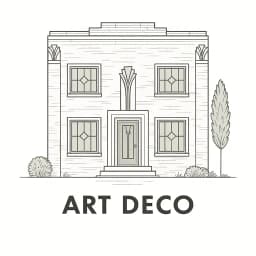
Art Deco

A-Frame
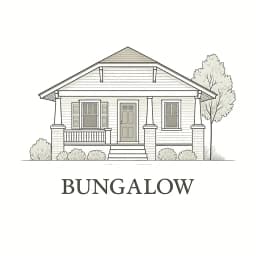
Bungalow
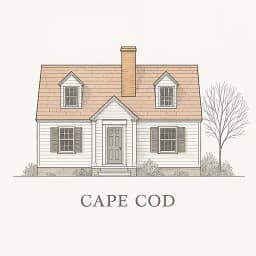
Cape Cod
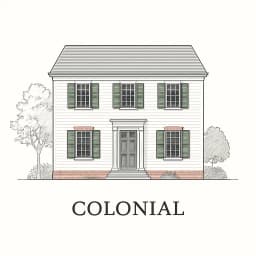
Colonial
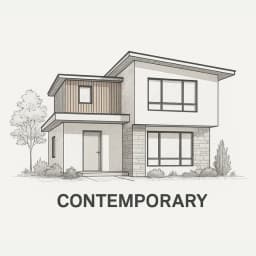
Contemporary
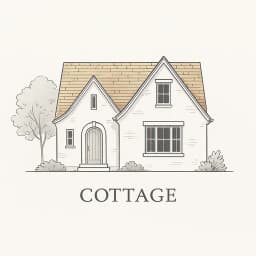
Cottage
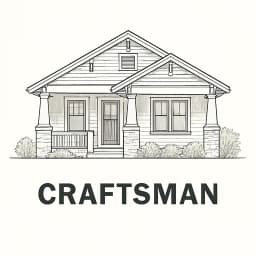
Craftsman
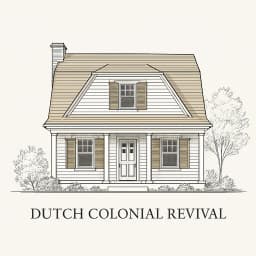
Dutch Colonial Revival
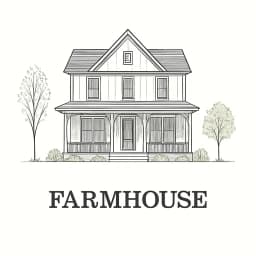
Farmhouse

Federal Colonial
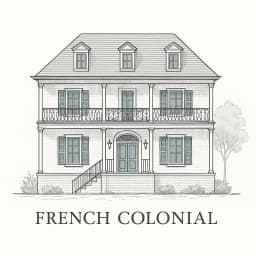
French Colonial
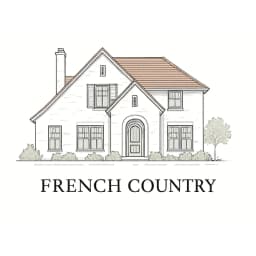
French Country
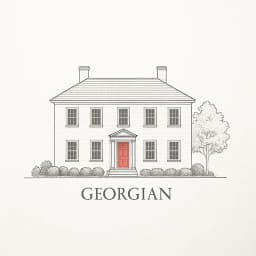
Georgian

Gothic Revival
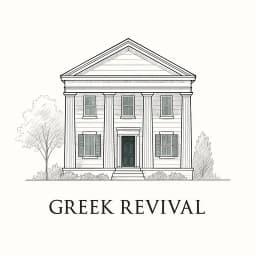
Greek Revival

Italianate
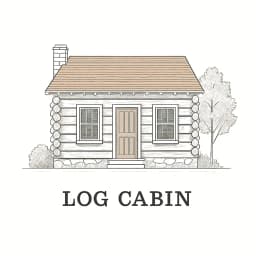
Log Cabin
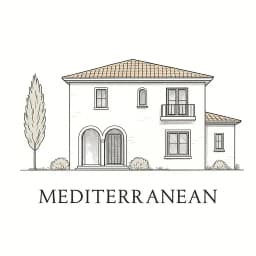
Mediterranean
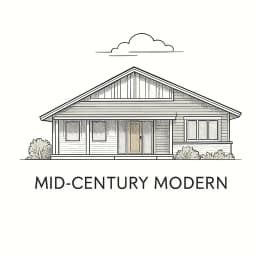
Mid-century Modern

Mission

Modern
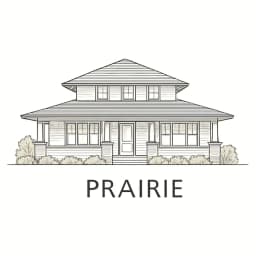
Prairie
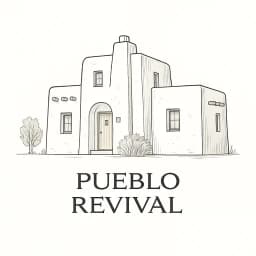
Pueblo Revival
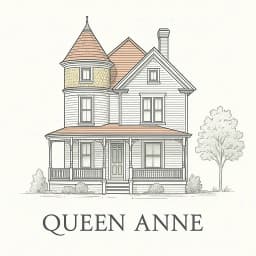
Queen Anne
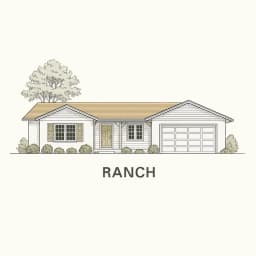
Ranch
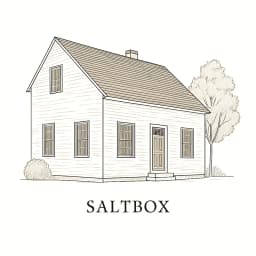
Saltbox
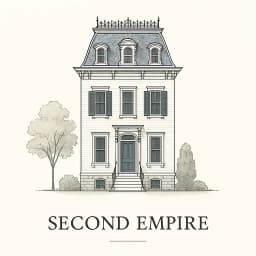
Second Empire

Shingle
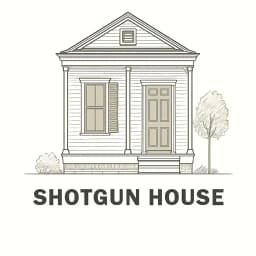
Shotgun
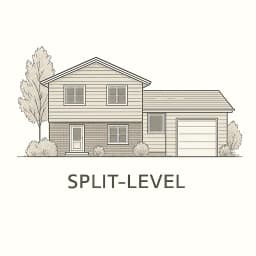
Split-Level
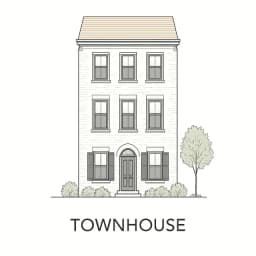
Townhouse

Tudor Revival
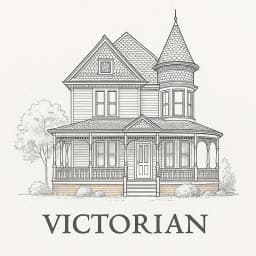
Victorian
1. A-Frame Style
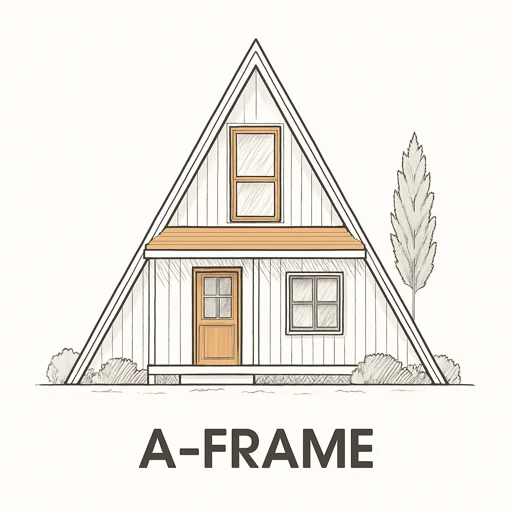
- Geographical Concentration: Mountain and coastal vacation areas
- Distinctive Feature: Distinctive triangular A-shaped roof
A-Frame architecture became popular in the 1950s and 1960s as an affordable vacation home style. A-Frame homes are characterized by their distinctive triangular shape, with steeply pitched roofs that extend nearly to the ground.
The simple triangular design was easy to construct and provided excellent snow shedding capabilities, making it ideal for mountain and coastal vacation areas. The style gained popularity through mail-order house plans and became synonymous with mid-century leisure and outdoor living.
This practical vacation home style captured America's post-war desire for affordable recreation and connection with nature.
Curb Appeal Advice: A-Frame Home
2. Art Deco Style

- Geographical Concentration: Urban areas nationwide
- Distinctive Feature: Geometric patterns and decorative elements
Art Deco architecture emerged in the 1920s and 1930s, reflecting the optimism and technological progress of the Jazz Age. The style became synonymous with America’s growing urban culture and early Hollywood glamour.
Defined by bold geometric patterns, stepped facades, and symmetrical forms, Art Deco homes conveyed sophistication and forward-looking design. Decorative motifs often drew from ancient Egyptian, Aztec, and Mayan art, blending historical inspiration with streamlined modern aesthetics.
Builders frequently used industrial materials such as steel, glass, and concrete to create sleek exteriors. These choices gave Art Deco homes a distinctive, contemporary look for their time while reinforcing their reputation as glamorous and innovative.
Curb Appeal Advice: Art Deco Home
3. Bungalow Style
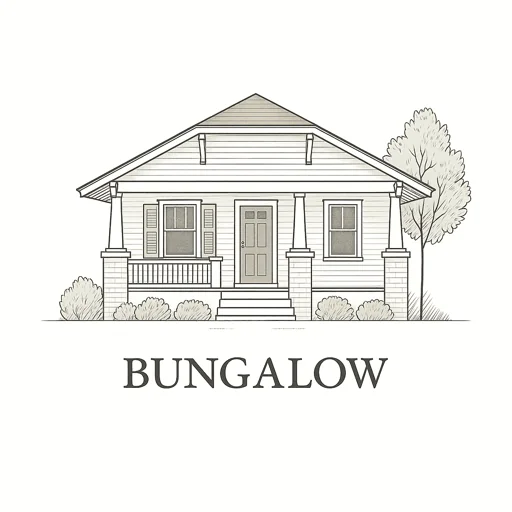
- Geographical Concentration: Suburban areas nationwide
- Distinctive Feature: Single-story design with low-pitched roof
Bungalow architecture became popular in America in the early 1900s, offering an affordable alternative to larger Victorian homes. Bungalows are characterized by their single-story design, low-pitched roofs, and efficient use of space.
The style originated in India and was adapted by British colonial administrators before being imported to America. Bungalows became particularly popular in California and the Midwest, where they offered practical, affordable housing for the growing middle class.
This practical style helped democratize homeownership and became the foundation for America's suburban development in the early 20th century.
Curb Appeal Advice: Bungalow Home
4. Cape Cod Style
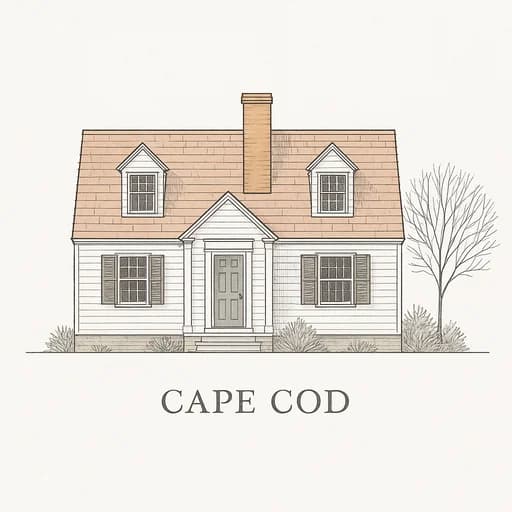
- Geographical Concentration: Massachusetts and coastal New England
- Distinctive Feature: Steep gabled roof with dormer windows
The Cape Cod style emerged in the late 1600s when English settlers in Massachusetts adapted their traditional half-timbered houses to the harsh coastal climate. Cape Cod homes are similar to Colonial homes but originated in Cape Cod, Massachusetts.
The steep roof shed snow quickly, and the low profile resisted strong winds. Large central fireplaces provided essential heat during harsh New England winters. The style gained national popularity in the 1930s when Sears, Roebuck & Co. sold Cape Cod house kits through their mail-order catalog, making this affordable style accessible to middle-class families across America.
They became the iconic American family home in the 20th Century. This simple, affordable style helped democratize homeownership and became the foundation for America's suburban development.
Curb Appeal Advice: Cape Cod Home
5. Colonial Style
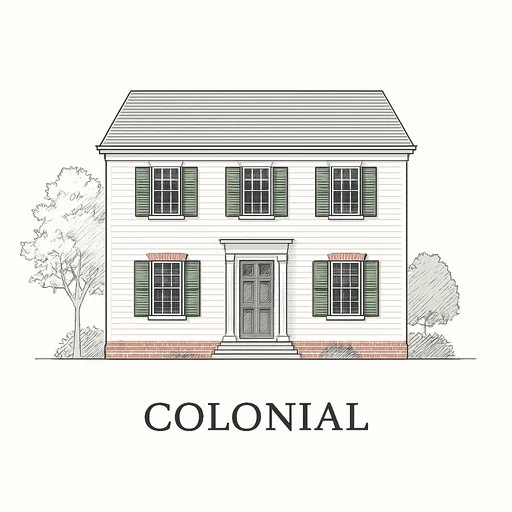
- Geographical Concentration: New England and Mid-Atlantic states
- Distinctive Feature: Symmetrical facade with centered front door
British settlers brought Colonial-style houses to America in the early 1600s, adapting European designs to local materials and climate. These simple rectangular homes became dominant in the 13 colonies and remained popular through the 1800s.
The style varies by region as communities worldwide built Colonial homes suited to their culture. The simple rectangular design allowed for efficient construction using local timber, and the central chimney provided heat for the entire home during harsh New England winters.
British Colonial is the most common version and remains among the cheapest types of houses to build. This practical design became the foundation for many later American house styles.
Curb Appeal Advice: Colonial Home
6. Contemporary Style
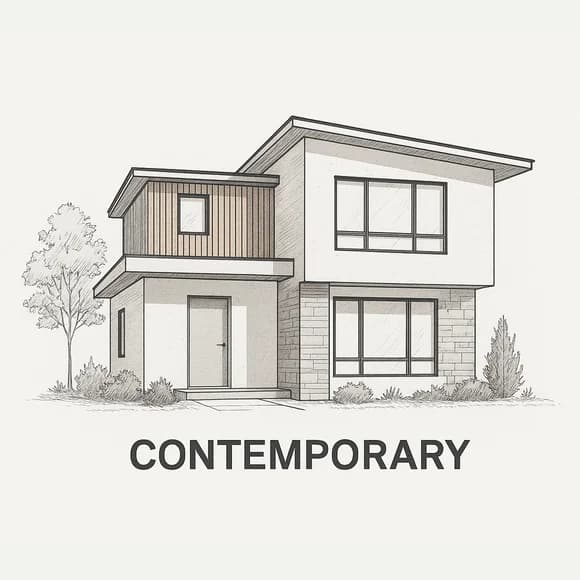
- Geographical Concentration: California and Colorado
- Distinctive Feature: Asymmetrical exterior with sustainable materials
Contemporary architecture emerged in the 1970s as a response to the rigid forms of Modernism. Contemporary homes resemble mid-20th-century modern homes with an emphasis on sustainability.
The style emphasizes environmental responsibility and often incorporates recycled materials, solar panels, and energy-efficient systems. Contemporary homes are built today across America, with particular popularity in California, Colorado, and other regions where environmental consciousness and modern aesthetics align.
This style represents America's growing commitment to sustainable living and reflects changing attitudes toward environmental responsibility in residential architecture.
Curb Appeal Advice: Contemporary Home
7. Cottage Style
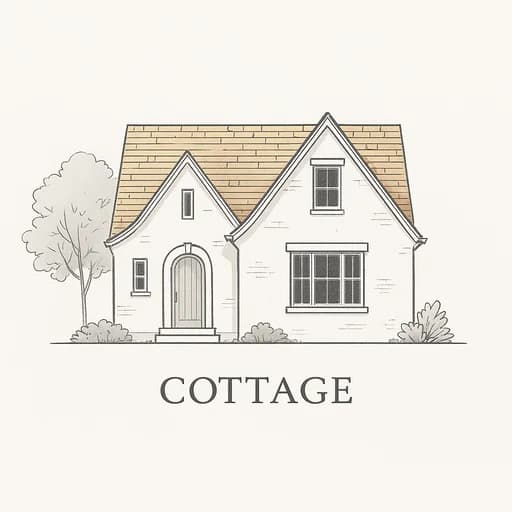
- Geographical Concentration: Rural areas and vacation destinations
- Distinctive Feature: Cozy, quaint design with traditional aesthetics
The cottage style originated in England during the Middle Ages as simple dwellings for rural workers. Cottage-style homes are known for being cozy and quaint, focusing on charm and comfort.
In America, cottage architecture became popular in the early 1900s as part of the Arts and Crafts movement, which emphasized handcrafted details and natural materials. Cottage homes were often built as vacation homes or starter houses, offering charm and affordability.
This style helped establish America's tradition of vacation homes and became synonymous with relaxed, comfortable living away from urban centers.
Curb Appeal Advice: Cottage Home
8. Craftsman Style
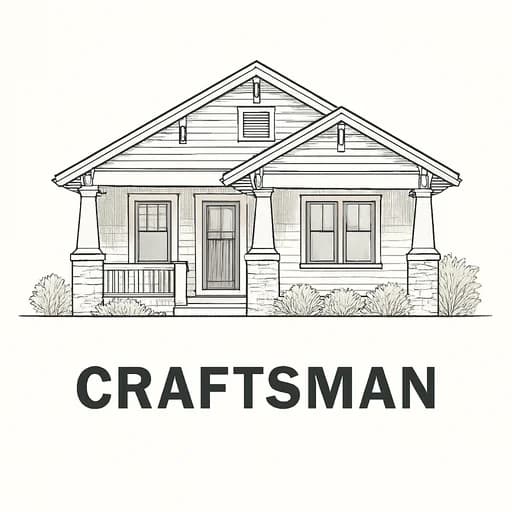
- Geographical Concentration: California and Pacific Northwest
- Distinctive Feature: Low-pitched roof with overhanging eaves
The Craftsman style emerged in California in the early 1900s as part of the Arts and Crafts movement. The Craftsman style emerged from the Arts and Crafts movement, which focused on simple designs in response to ornate Victorian styles.
Architects like Greene & Greene popularized the style, which emphasized handcrafted details and natural materials. The style spread nationwide through pattern books and mail-order house plans, becoming particularly popular in California, the Pacific Northwest, and the Midwest between 1900-1930.
This American interpretation of the Arts and Crafts philosophy created a uniquely American architectural identity that celebrated craftsmanship and natural materials.
Curb Appeal Advice: Craftsman Home
9. Dutch Colonial Revival Style
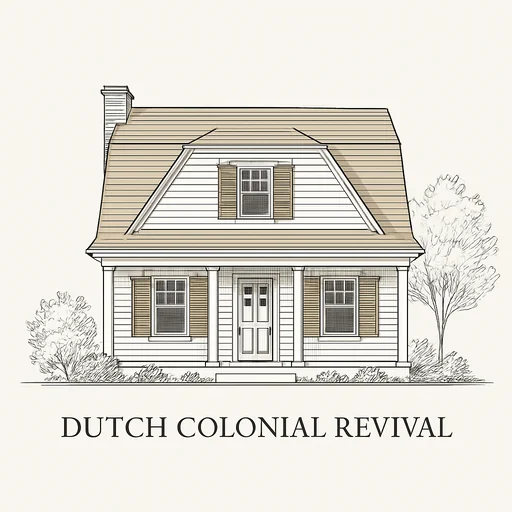
- Geographical Concentration: New York and Pennsylvania
- Distinctive Feature: Gambrel roof resembling a barn
Dutch settlers introduced this style to New York (then New Amsterdam) in the 1600s. The gambrel roof design originated in Holland as a way to maximize storage space while avoiding steep roof taxes.
Many Dutch Colonial homes today were built during the Colonial Revival period of the early 20th century when architects sought to create homes that combined historical charm with modern convenience. Original Dutch Colonial homes featured flared eaves and detailed wood or brickwork.
Many Dutch Colonial Revival homes were built between 1900-1940 as part of the broader Colonial Revival movement. The gambrel roof design influenced American barn architecture and became a distinctive feature of rural American landscapes.
Curb Appeal Advice: Dutch Colonial Revival Home
10. Farmhouse Style
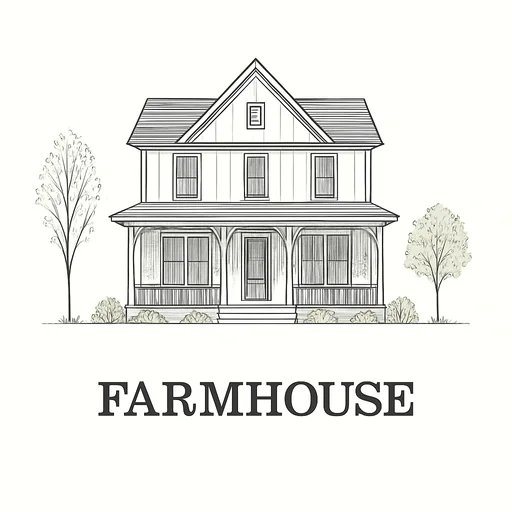
- Geographical Concentration: Rural areas across America
- Distinctive Feature: Large front porch with natural materials
The American farmhouse evolved from practical agricultural needs in the 1700s and 1800s. Farmhouses are practical, timeless homes found across the U.S., often with regional variations.
Early farmhouses were simple, functional structures built by farmers using local materials. The style became more refined in the late 1800s as prosperous farmers built larger, more elaborate homes.
Farmhouses remain common in rural areas across America, with regional variations reflecting local building traditions and climate conditions. The farmhouse aesthetic has experienced a modern revival, influencing contemporary home design with its emphasis on simplicity and natural materials.
Curb Appeal Advice: Farmhouse Home
11. Federal Colonial Style
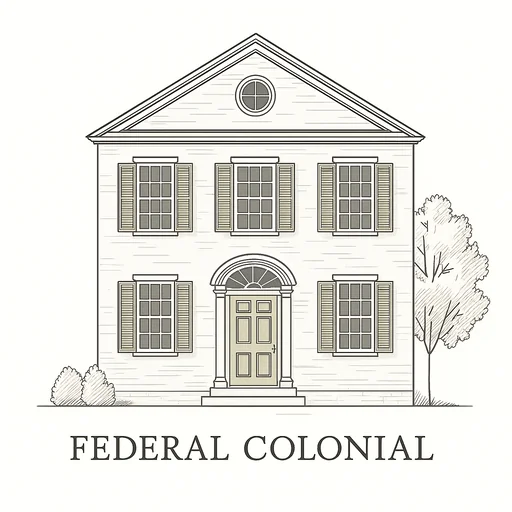
- Geographical Concentration: Boston, Philadelphia, and Charleston
- Distinctive Feature: Elliptical fanlight windows above front door
Federal architecture emerged in the 1780s as Americans sought to create a distinct national identity after independence. Federal-style homes became popular after the American Revolution and evolved from the Georgian style.
The style incorporated classical elements from ancient Rome and Greece, symbolizing the new republic's democratic ideals. Many Federal homes were built between 1780-1830, particularly in port cities like Boston, Philadelphia, and Charleston where wealthy merchants could afford the elaborate details.
This architectural expression of American independence helped establish the country's cultural identity in the early republic.
Curb Appeal Advice: Federal Colonial Home
12. French Colonial Style
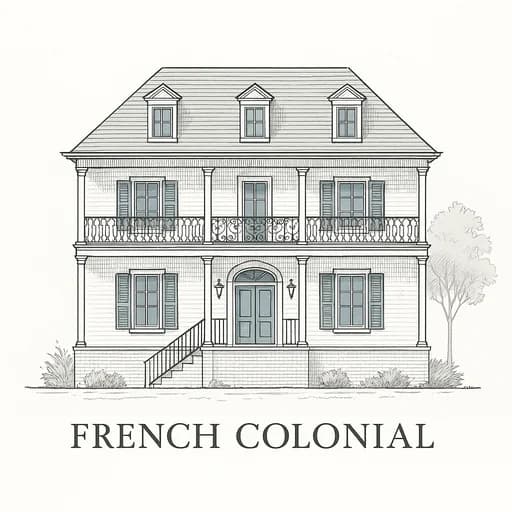
- Geographical Concentration: Louisiana and Gulf Coast
- Distinctive Feature: Raised first floor with full-width balcony
French colonists brought this style to Louisiana and other French territories in the 1700s. French Colonial homes are found worldwide, with significant variety in their design.
The raised basement design protected homes from flooding in swampy areas, while the external stairs provided ventilation in hot, humid climates. The style spread throughout French colonial regions, including the Caribbean and parts of Canada, before becoming popular in other warm-weather areas of the United States.
This style deeply influenced Southern architecture and helped establish the region's distinctive approach to hot-weather living.
Curb Appeal Advice: French Colonial Home
13. French Country Style
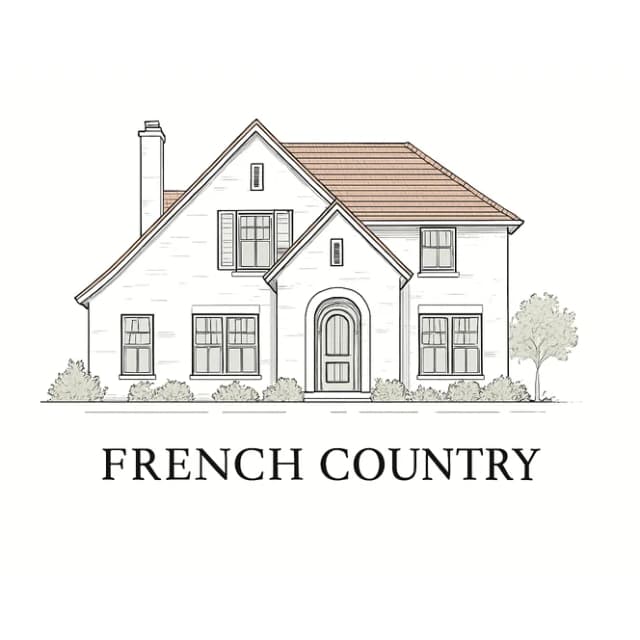
- Geographical Concentration: Affluent suburbs nationwide
- Distinctive Feature: Steep pitched roof with tall windows
French Country architecture draws inspiration from the rural chateaus and farmhouses of the French countryside. A French Country home blends rustic and upscale charm.
The style became popular in America after World War I when returning soldiers brought back European architectural influences. French Country homes gained particular popularity in the 1920s and 1930s, especially in affluent suburbs where homeowners sought to recreate the charm and elegance of French provincial architecture.
This post-war European influence reflected America's growing international perspective and desire for sophisticated, European-inspired living.
Curb Appeal Advice: French Country Home
14. Georgian Style
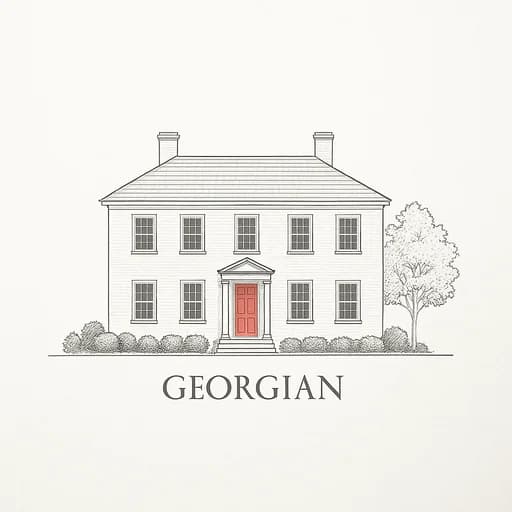
- Geographical Concentration: Virginia and Southern states
- Distinctive Feature: Formal classical details with crown and pilasters
Georgian architecture arrived in America in the early 1700s, named after the four British kings named George who ruled during this period. Georgian homes were common in the 18th century and are known for their formal, classical details.
The style reflected the formal, symmetrical ideals of the Enlightenment and was favored by wealthy landowners and merchants. Georgian homes were built throughout the colonies between 1700-1780, with regional variations adapting to local materials and climate conditions.
This sophisticated style marked America's growing prosperity and cultural sophistication in the colonial period.
Curb Appeal Advice: Georgian Home
15. Gothic Revival Style
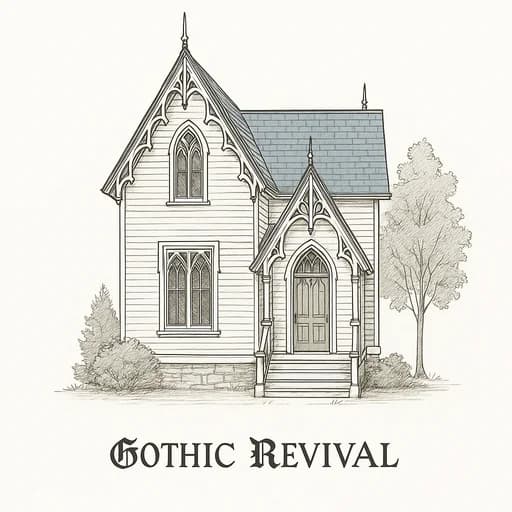
- Geographical Concentration: Rural areas and church architecture
- Distinctive Feature: Pointed arches in windows and doors
Gothic Revival architecture began in the mid-19th century, heavily influencing early Victorian homes. It draws from Medieval European designs and was intended as a rural country home style.
This style was also popular in schools and churches. The Gothic Revival's influence on American church architecture helped establish the country's tradition of grand, spiritual buildings that reflected European religious heritage.
Curb Appeal Advice: Gothic Revival Home
16. Greek Revival Style

- Geographical Concentration: Southern states
- Distinctive Feature: Large porch with Greek-inspired columns
Greek Revival architecture became America's first national style in the 1820s and 1830s. In the 1820s, Americans rediscovered Greek and Roman culture, inspiring the Greek Revival style.
The style reflected the young nation's admiration for ancient Greek democracy and culture. Greek Revival homes were built throughout America between 1820-1860, with particular popularity in the South where the large porches provided relief from hot summers.
The style symbolized American ideals of democracy and classical education.
Curb Appeal Advice: Greek Revival Home
17. Italianate Style

- Geographical Concentration: East Coast cities
- Distinctive Feature: Overhanging eaves with decorative brackets
Italianate architecture follows the romantic, asymmetrical trends of the Victorian era but borrows elements from Medieval Italy. It was especially popular on the East Coast from 1850 to 1880.
Pattern books made Italianate designs accessible, allowing homeowners to incorporate these features into both large estates and smaller urban homes. This democratization of architectural design through pattern books helped spread sophisticated European styles to middle-class American families.
Curb Appeal Advice: Italianate Home
18. Log Cabin Style

- Geographical Concentration: Rural and mountain areas
- Distinctive Feature: Traditional log construction with interlocking corners
Log cabin architecture represents one of America's oldest building traditions, dating back to the colonial period. Log cabins are characterized by their traditional log construction, with logs stacked horizontally and interlocking at the corners.
The style was brought to America by Scandinavian and German settlers and became the standard for frontier housing. Log cabins remain popular today in rural and mountain areas, where they offer natural insulation and a connection to American heritage.
This enduring style represents America's frontier spirit and continues to symbolize rustic, natural living.
Curb Appeal Advice: Log Cabin Home
19. Mediterranean Style

- Geographical Concentration: California and Arizona
- Distinctive Feature: Stucco walls with red-tile roof
Mediterranean architecture arrived in America through Spanish and Italian immigrants, particularly in California and Florida. Mediterranean-style homes are popular in warm climates, particularly in California and Arizona.
The style gained widespread popularity in the 1920s when architects like Addison Mizner popularized Mediterranean designs in Palm Beach and other resort communities. The style's thick walls and tile roofs were well-suited to warm climates, making it popular throughout the Sun Belt states.
This style helped define California's architectural identity and became synonymous with the state's glamorous lifestyle and Mediterranean climate.
Curb Appeal Advice: Mediterranean Home
20. Mid-century Modern Style
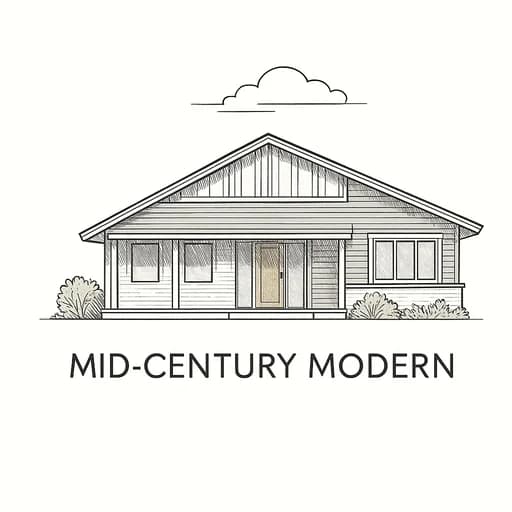
- Geographical Concentration: California, Arizona, and Florida
- Distinctive Feature: Flat planes with clean lines
Mid-century Modern architecture flourished in America between 1945-1975, reflecting post-war optimism and technological progress. Mid-century Modern homes were built from the 1940s to the 1970s.
The style was popularized by architects like Joseph Eichler in California and influenced by Frank Lloyd Wright's organic architecture. Mid-century homes emphasized indoor-outdoor living and were built extensively in suburban developments across America, particularly in California, Arizona, and Florida.
This optimistic post-war style captured America's confidence and technological advancement during the mid-20th century.
Curb Appeal Advice: Mid-century Modern Home
21. Mission Style
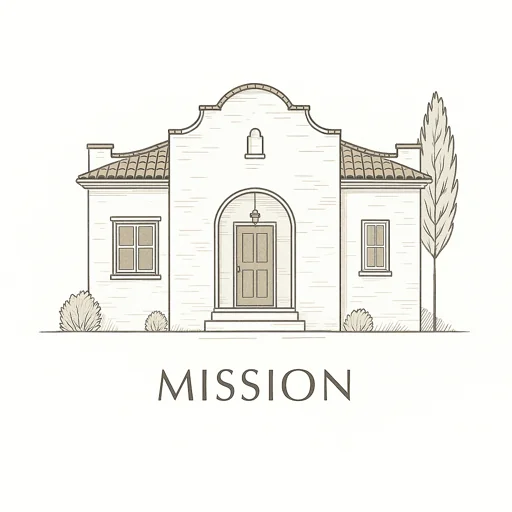
- Geographical Concentration: California and Southwest
- Distinctive Feature: Stucco walls with red tile roof and arched elements
Mission architecture draws inspiration from the Spanish missions of California and the Southwest. These homes feature stucco walls, red tile roofs, and distinctive arched doorways and windows.
The style gained popularity in the early 1900s as part of the broader Mission movement, which sought to preserve and celebrate California's Spanish heritage. Mission homes are particularly common in California, Arizona, and New Mexico, where they reflect the region's cultural history.
This romantic revival style helped establish California's architectural identity and became synonymous with the state's Mediterranean climate and cultural heritage.
Curb Appeal Advice: Mission Home
22. Modern Style

- Geographical Concentration: California and progressive regions
- Distinctive Feature: Geometric shapes with floor-to-ceiling windows
Modern architecture emerged in Europe in the 1920s with architects like Le Corbusier and Walter Gropius. Modern home design emerged in the early 20th century and continues to influence contemporary homes today.
The style arrived in America in the 1930s through architects like Richard Neutra and Philip Johnson. Modern homes emphasized function over ornament, using new materials like steel and glass.
The style gained popularity in California and other progressive regions, though it remained controversial for its stark, minimalist appearance. This European import marked America's embrace of international modernism and influenced generations of American architects.
Curb Appeal Advice: Modern Home
23. Prairie Style
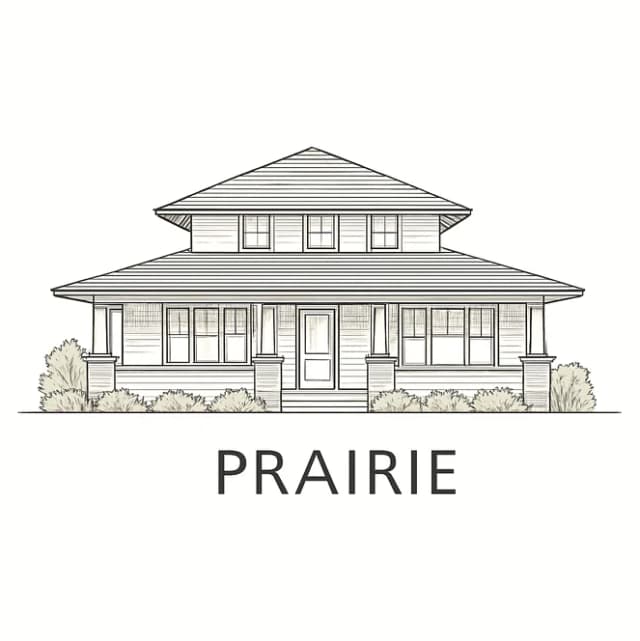
- Geographical Concentration: Illinois and Wisconsin
- Distinctive Feature: Long, low-to-the-ground horizontal design
Prairie School architecture was developed by Frank Lloyd Wright and his contemporaries in Chicago between 1900-1920. Prairie-style homes, made famous by Frank Lloyd Wright, blend into the landscape with long, low shapes that reflect the Midwest's natural beauty.
The style emphasized horizontal lines that reflected the flat Midwestern landscape. Prairie homes were built primarily in Illinois, Wisconsin, and other Midwestern states, though the style influenced residential architecture nationwide.
The horizontal emphasis and open floor plans represented a radical departure from traditional Victorian homes. This innovative approach to residential design influenced modern American architecture for decades to come.
Curb Appeal Advice: Prairie Home
24. Pueblo Revival Style
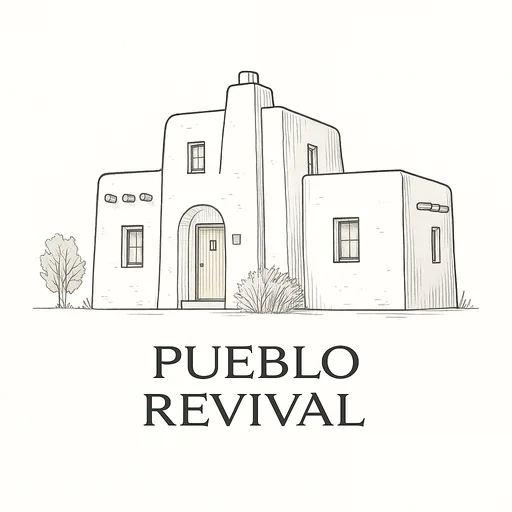
- Geographical Concentration: New Mexico, Arizona, and Colorado
- Distinctive Feature: Rounded corners with earth tones
Pueblo Revival architecture emerged in the early 1900s when architects in Santa Fe began adapting traditional Pueblo Indian building techniques to modern homes. Inspired by indigenous Pueblo architecture in the Southwestern U.S.
The style gained national attention in the 1920s and 1930s, particularly in the Southwest where it reflected regional cultural heritage. Pueblo Revival homes are Geographical Concentration New Mexico, Arizona, and Colorado, where the thick adobe walls provide natural insulation against desert heat and cold.
This style represents one of the few American architectural movements that directly incorporated indigenous building traditions into modern residential design.
Curb Appeal Advice: Pueblo Revival Home
25. Queen Anne Style
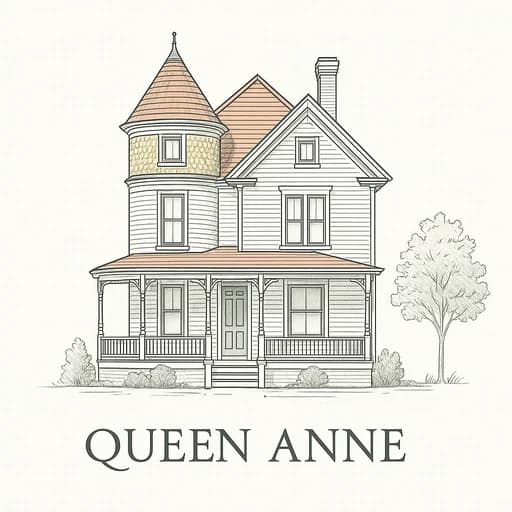
- Geographical Concentration: Victorian-era neighborhoods
- Distinctive Feature: Large round or polygonal towers
Queen Anne homes became popular in the late Victorian period, around 1880. This style is considered the quintessential Victorian home, known for ornate woodworking inside and out.
Queen Anne homes vary by region but maintain essential features. This style is common in homes but also appears in schools, churches, and offices. The Queen Anne style played a crucial role in America's suburban development, offering homeowners a sophisticated alternative to simpler farmhouse designs.
Curb Appeal Advice: Queen Anne Home
26. Ranch Style
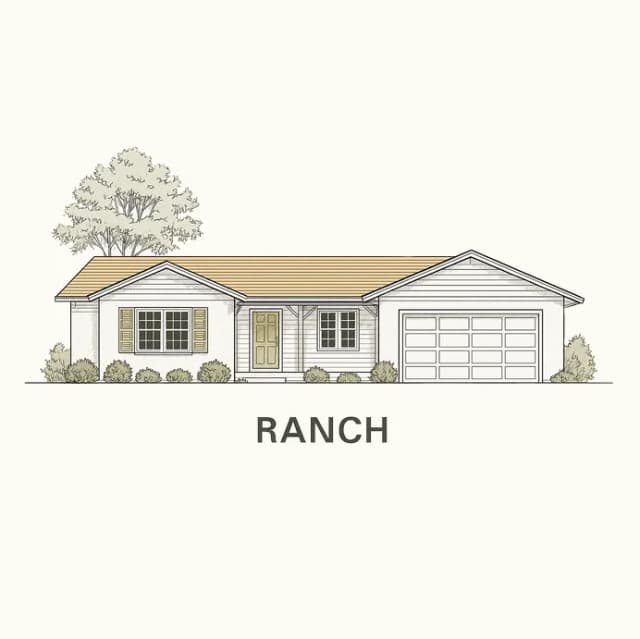
- Geographical Concentration: Suburban areas nationwide
- Distinctive Feature: Single-story floor plan with rectangular layout
Ranch homes became America's most popular house style in the 1950s and 1960s, reflecting post-war suburban expansion and the rise of automobile culture. Ranch-style homes are among the most searched home styles in the U.S.
The style originated in California in the 1920s but gained nationwide popularity through mass production by builders like Levitt & Sons. Ranch homes were built extensively in suburban developments across America, offering affordable, single-story living that appealed to growing families.
This mass-produced suburban style symbolized the American dream of homeownership and helped define the post-war American landscape.
Curb Appeal Advice: Ranch Home
27. Saltbox Style
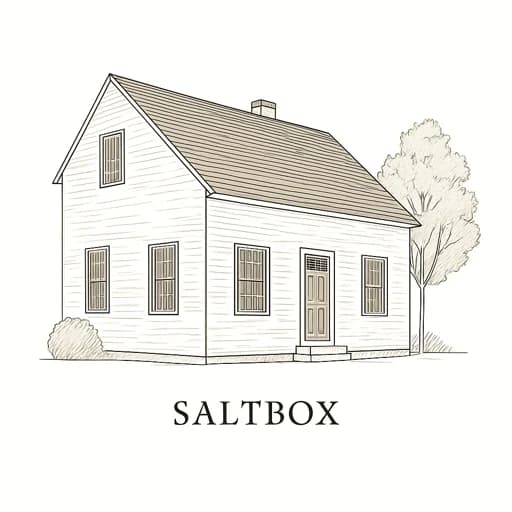
- Geographical Concentration: New England
- Distinctive Feature: Distinctive asymmetrical roof with long rear slope
Saltbox architecture emerged in colonial New England as a practical adaptation of the basic Colonial house. Saltbox homes are characterized by their distinctive asymmetrical roof, with a long rear slope that extends nearly to the ground.
The style developed as colonists added lean-to additions to their existing homes, creating additional living space while avoiding the steep roof taxes of the time. Saltbox homes are most common in New England, where they represent an important chapter in American architectural evolution.
This practical adaptation demonstrates how early American builders solved practical problems with creative design solutions.
Curb Appeal Advice: Saltbox Home
28. Second Empire
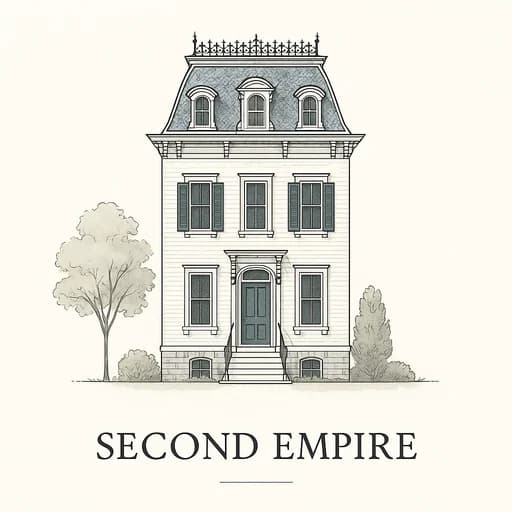
- Geographical Concentration: Northeast and Midwest
- Distinctive Feature: Mansard roof with ornate window frames
Second Empire homes, built during the Victorian period, originated in France before spreading to the U.S., particularly in the Northeast and Midwest. This style offers a simplified Victorian aesthetic.
Second Empire homes are often the only Victorian style with symmetrical, rectangular layouts. This French architectural influence demonstrated America's continued fascination with European design traditions during the Victorian era.
Curb Appeal Advice: Second Empire Home
29. Shingle Style
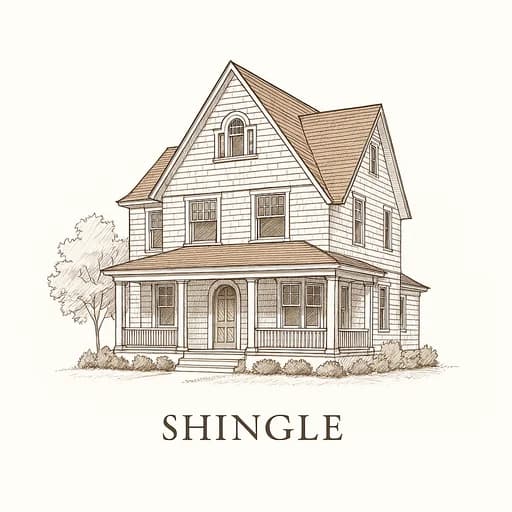
- Geographical Concentration: Coastal areas and seaside communities
- Distinctive Feature: Shingles covering the entire exterior
Shingle-style homes draw from Colonial architecture, simplifying the ornate features common in the late Victorian era. These homes are known for their unique floor plans and shingles that cover the entire exterior.
Shingle-style homes were designed to be works of art, encouraging creativity in their shapes and features. This style became particularly popular in coastal areas and helped establish America's tradition of sophisticated seaside architecture.
Curb Appeal Advice: Shingle Style Home
30. Shotgun Style
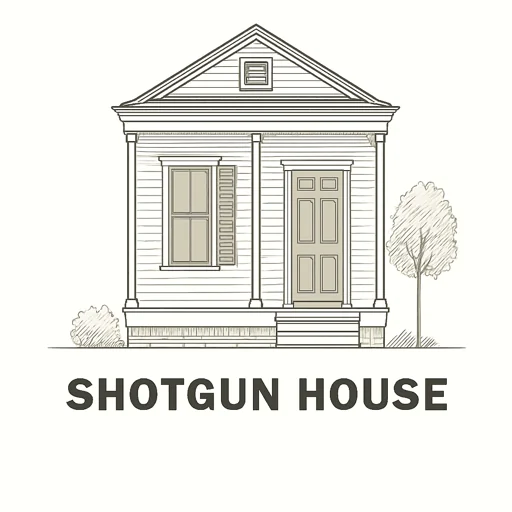
- Geographical Concentration: Southern cities
- Distinctive Feature: Narrow, single-story design with rooms arranged in a line
Shotgun architecture is a distinctive urban housing style characterized by its narrow, single-story design with rooms arranged in a straight line from front to back. Shotgun homes are typically only one room wide and three to five rooms deep.
The style originated in New Orleans and spread throughout Southern cities as an efficient solution for narrow urban lots. Shotgun homes were popular among working-class families and remain common in historic urban neighborhoods throughout the South.
This efficient urban housing solution demonstrates how American architecture adapted to the constraints of city living and narrow lot sizes.
Curb Appeal Advice: Shotgun Home
31. Split-Level Style
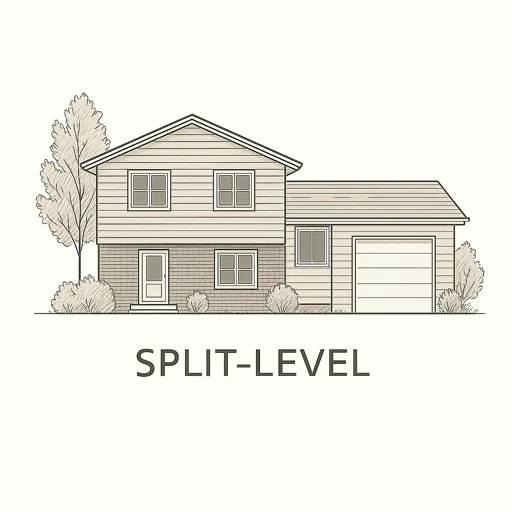
- Geographical Concentration: Suburban areas nationwide
- Distinctive Feature: Multi-level design with staggered floor levels
Split-level architecture became popular in the 1950s and 1960s as a practical solution for building on sloping lots. Split-level homes feature multiple floor levels that are staggered rather than stacked, creating distinct living zones.
The style was developed by architects seeking to maximize usable space on challenging terrain while maintaining an open, modern feel. Split-level homes became particularly popular in suburban developments across America, where they offered families practical, affordable housing with modern amenities.
This innovative design solution demonstrates how American architecture adapted to suburban terrain while meeting the needs of growing families.
Curb Appeal Advice: Split-Level Home
32. Townhouse Style
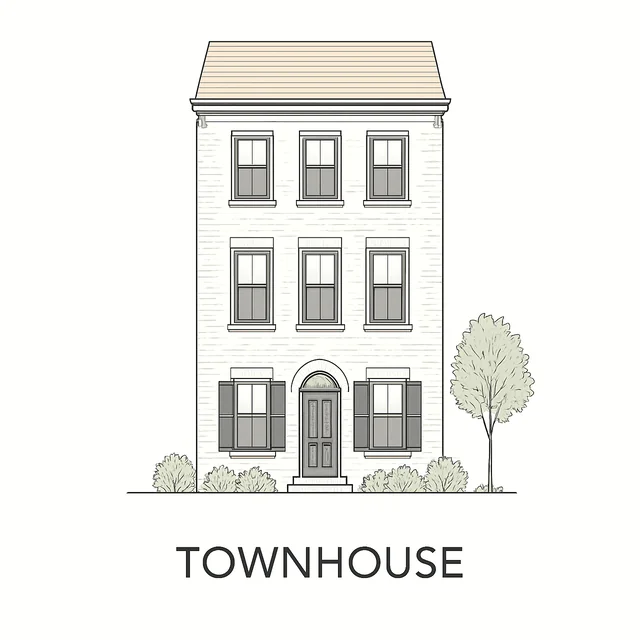
- Geographical Concentration: Cities and dense neighborhoods
- Distinctive Feature: Narrow design with multiple floors
Townhomes are common in cities and dense neighborhoods. They're typically narrow homes designed to maximize vertical space, often without large yards.
These homes are considered townhouses if they share one or two walls with neighboring homes, have private entrances, are built with multiple floors, and may be part of a homeowners association. Townhomes can mimic styles like Italianate or Greek Revival while maintaining a condensed, vertical layout.
This efficient urban housing solution became essential as American cities grew denser and land became more valuable in the 19th and 20th centuries.
Curb Appeal Advice: Townhouse Home
33. Tudor Revival Style
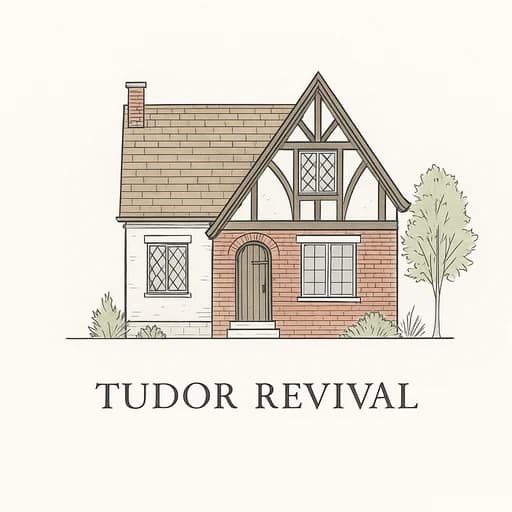
- Geographical Concentration: East Coast and Midwest
- Distinctive Feature: Steep pitched roof with exposed half-timbering
Tudor Revival homes take inspiration from Medieval Tudor architecture, often resembling charming cottages. They're especially popular on the East Coast and Midwest.
The Tudor Revival peaked in the 1920s and remains popular today. This romantic revival style appealed to Americans' desire for historical charm and helped establish the country's tradition of suburban architectural eclecticism.
Curb Appeal Advice: Tudor Revival Home
34. Victorian Style
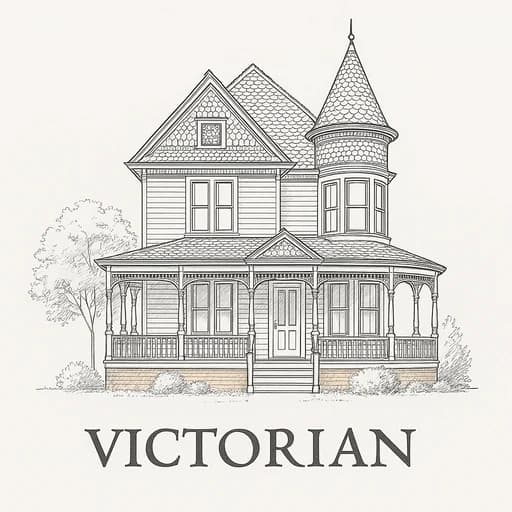
- Geographical Concentration: Historic urban neighborhoods
- Distinctive Feature: Elaborate woodwork with towers and turrets
Victorian homes were built during Queen Victoria's reign from 1837 to 1901. The term "Victorian" refers to various styles, but all feature ornate details and asymmetrical floor plans.
Victorian homes emphasize ornamentation and were mass-produced thanks to industrialization. This marked the first time in American history that architectural details could be mass-produced, making ornate homes accessible to the growing middle class.
Curb Appeal Advice: Victorian Home
Reference: Architectural House Styles That Built America
| Style | Region | First Introduced | Distinctive Feature |
|---|---|---|---|
| A-Frame | Mountain and coastal vacation areas | 1950s-1960s | Distinctive triangular A-shaped roof |
| Art Deco | Urban areas nationwide | 1920s-1930s | Geometric patterns and decorative elements |
| Bungalow | Suburban areas nationwide | Early 1900s | Single-story design with low-pitched roof |
| Cape Cod | Massachusetts and coastal New England | Late 1600s | Steep gabled roof with dormer windows |
| Colonial | New England and Mid-Atlantic states | Early 1600s | Symmetrical facade with centered front door |
| Contemporary | California and Colorado | 1970s | Asymmetrical exterior with sustainable materials |
| Cottage | Rural areas and vacation destinations | Early 1900s | Cozy, quaint design with traditional aesthetics |
| Craftsman | California and Pacific Northwest | Early 1900s | Low-pitched roof with overhanging eaves |
| Dutch Colonial Revival | New York and Pennsylvania | 1600s | Gambrel roof resembling a barn |
| Farmhouse | Rural areas across America | 1700s-1800s | Large front porch with natural materials |
| Federal Colonial | Boston, Philadelphia, and Charleston | 1780s | Elliptical fanlight windows above front door |
| French Colonial | Louisiana and Gulf Coast | 1700s | Raised first floor with full-width balcony |
| French Country | Affluent suburbs nationwide | 1920s-1930s | Steep pitched roof with tall windows |
| Georgian | Virginia and Southern states | Early 1700s | Formal classical details with crown and pilasters |
| Gothic Revival | Rural areas and church architecture | Mid-1800s | Pointed arches in windows and doors |
| Greek Revival | Southern states | 1820s-1830s | Large porch with Greek-inspired columns |
| Italianate | East Coast cities | 1850-1880 | Overhanging eaves with decorative brackets |
| Log Cabin | Rural and mountain areas | Colonial period | Traditional log construction with interlocking corners |
| Mediterranean | California and Arizona | 1920s | Stucco walls with red-tile roof |
| Mid-century Modern | California, Arizona, and Florida | 1945-1975 | Flat planes with clean lines |
| Mission | California and Southwest | Early 1900s | Stucco walls with red tile roof and arched elements |
| Modern | California and progressive regions | 1920s | Geometric shapes with floor-to-ceiling windows |
| Prairie | Illinois and Wisconsin | 1900-1920 | Long, low-to-the-ground horizontal design |
| Pueblo Revival | New Mexico, Arizona, and Colorado | Early 1900s | Rounded corners with earth tones |
| Queen Anne | Victorian-era neighborhoods | 1880s | Large round or polygonal towers |
| Ranch | Suburban areas nationwide | 1950s-1960s | Single-story floor plan with rectangular layout |
| Saltbox | New England | Colonial period | Distinctive asymmetrical roof with long rear slope |
| Second Empire | Northeast and Midwest | Victorian period | Mansard roof with ornate window frames |
| Shingle | Coastal areas and seaside communities | Late 1800s | Shingles covering the entire exterior |
| Shotgun | Southern cities | 1800s | Narrow, single-story design with rooms arranged in a line |
| Split-Level | Suburban areas nationwide | 1950s-1960s | Multi-level design with staggered floor levels |
| Townhouse | Cities and dense neighborhoods | 1800s-1900s | Narrow design with multiple floors |
| Tudor Revival | East Coast and Midwest | 1920s | Steep pitched roof with exposed half-timbering |
| Victorian | Historic urban neighborhoods | 1837-1901 | Elaborate woodwork with towers and turrets |
Frequently Asked Questions About U.S. Home Styles
Find answers to common questions about house styles, how to identify them, and how to choose the right style for your needs. We are not a lender.
What are the most popular house styles in America?
Ranch-style homes are the most popular in 34 U.S. states, especially in the Midwest and East Coast. Other popular styles include Colonial, Craftsman, Victorian, and Modern homes.
How do I identify different house styles?
Look for key architectural features like roof types, window styles, exterior materials, and overall symmetry. Each style has distinctive characteristics that make it recognizable.
Which house style is the cheapest to build?
Colonial-style houses are among the cheapest types of houses to build due to their simple rectangular design and straightforward construction methods.
What house styles are best for different climates?
Mediterranean homes work well in warm climates, Cape Cod homes handle northeastern weather, and Ranch homes are versatile for various climates across the U.S.
How do house styles affect home value?
Certain styles like Craftsman and Victorian homes often command premium prices due to their unique character and historical significance, while Ranch homes offer good value for families.
Can I mix different house styles in my home?
Yes, many homes incorporate elements from multiple styles. Contemporary homes often blend modern and traditional elements, while some homes evolve over time with additions.
What house styles are best for first-time homebuyers?
Ranch homes are excellent for first-time buyers due to their simple layout and low maintenance. Colonial homes also offer good value and classic appeal.
How do house styles relate to energy efficiency?
Contemporary and Modern homes often prioritize energy efficiency with sustainable materials and design. Older styles can be updated with modern insulation and windows.
What house styles are Geographical Concentration cities vs suburbs?
Townhouses are common in cities, while Ranch and Colonial homes dominate suburbs. Victorian homes are often found in historic urban neighborhoods.
How do I choose the right house style for my lifestyle?
Consider your family size, maintenance preferences, and desired features. Ranch homes work well for families, while Modern homes appeal to those seeking open floor plans.
America's Architectural Legacy: From Colonial to Contemporary
House styles will continue to evolve with influences from history, culture, and modern life. From Colonial simplicity to Modern innovation, each style tells a story about America's architectural journey and cultural values.
These 34 styles represent America's architectural heritage—from the practical Colonial homes that established the foundation, to the ornate Victorian mansions that reflected industrialization, to the mass-produced Ranch homes that symbolized the American dream, to the sustainable Contemporary designs that address modern environmental concerns.
Choose the style that fits your location, lifestyle, and preferences. Once you're ready, check your credit score, get pre-approved, and start house hunting for real.

